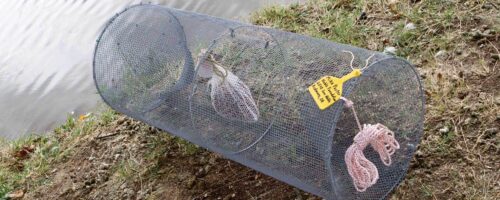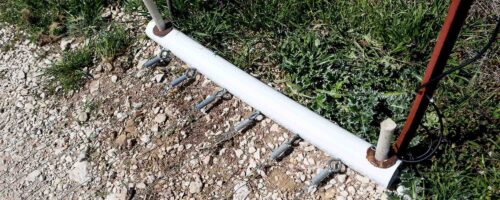Understanding duck food preferences is important when managing impoundments and wetlands to attract migratory ducks. Dabbling ducks and wood ducks are the focus of most duck hunters and duck habitat managers in southern Oklahoma and northern Texas. Dabbling duck species include mallard, gadwall, American wigeon, northern pintail, northern shoveler, three teal species (green-winged, blue-winged and cinnamon) and a few other less common species. Diving ducks such as canvasback, redhead, ring-necked duck and lesser scaup tend to receive less management focus in Oklahoma and Texas.
Several fall and/or winter food habit studies with sample sizes representing more than 25 ducks have been conducted on dabbling ducks or wood ducks in Texas, Louisiana, Missouri and Arkansas (I am not aware of such studies in Oklahoma or Kansas). Twenty-four of these studies are summarized here.
Duck foods that occur in southern Oklahoma or northern Texas are listed below. These foods comprised more than 1 percent of the duck diets in at least two of the studies or were listed as one of the three most utilized foods in a study. Each asterisk indicates the most utilized food that occurs in southern Oklahoma or northern Texas from each study. The asterisks do not total 24 because a few of the most utilized foods do not occur in southern Oklahoma or northern Texas.
Aquatic plants
- Coontail (Ceratophyllum demersum)
- Duckweeds (Lemna spp.)
- Duck’s-meat (Spirodela spp.)
- Filamentous algae*
- Muskgrasses (Chara spp.)
- Pondweeds* (Potamogeton spp., especially longleaf pondweed)
- Southern naiad (Najas guadalupensis)
- Stoneworts (Nitella spp.)
- Water milfoils (Myriophyllum spp.)
- Water primrose (Ludwigia spp.)
- Water shield (Brasenia schreberi)
Crop seeds
- Corn** (Zea mays)
- Sorghum* (Sorghum bicolor)
- Soybean (Glycine max)
- Wheat (Triticum aestivum)
Grass seeds
- American cup scale (Sacciolepsis striata)
- Bearded sprangletop (Leptochloa fusca)
- Broadleaf signal grass (Urochloa platyphylla)
- Panic grasses** (Panicum spp., especially fall panicum)
- Paspalums (Paspalum spp.)
- Rice cut-grass (Leersia oryzoides)
- Salt grass (Distichlis spicata)
- Wild millets*** (Echinochloa spp.)
Sedge seeds, rhizomes and tubers
(Most of these are somewhat aquatic, existing in shallow water or wet soil)
- Bulrushes (Schoenoplectus spp.)
- Flat sedges** (Cyperus spp., especially chufa)
- Hummock sedge (Carex joorii)
- Jamaican saw grass** (Cladium mariscus)
- Spike sedges* (Eleocharis spp., especially dwarf spike sedge)
Forb seeds
- Devil’s beggar-ticks (Bidens frondosa)
- Pigweeds (Amaranthus spp.)
- Smartweeds (Polygonum spp.)
Woody plant seeds or fruits
- Buttonbush (Cephalanthus occidentalis)
- Grapes (Vitis spp.)
- Hawthorns (Crataegus spp.)
- Oaks**** (Quercus spp.)
- Sweet gum (Liquidambar styraciflua)
Animals
- Amphipods (Amphipoda)
- Bivalves (Bivalvia)
- Crayfishes (Decapoda)
- Insects* (Insecta)
- Seed shrimp (Ostracoda)
- Snails** (Gastropoda)
- Water fleas (Cladocera)
Photos and descriptions of each plant species are available on one or more of the following websites:
Photos and descriptions of each animal group are available on the following website: en.wikipedia.org.



Comment